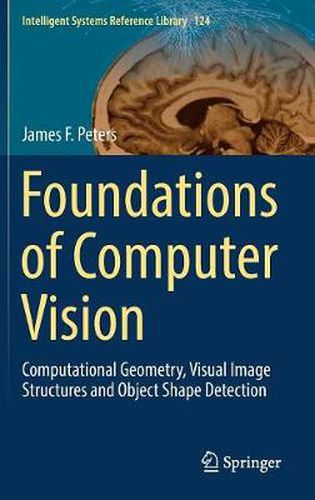Readings Newsletter
Become a Readings Member to make your shopping experience even easier.
Sign in or sign up for free!
You’re not far away from qualifying for FREE standard shipping within Australia
You’ve qualified for FREE standard shipping within Australia
The cart is loading…






This title is printed to order. This book may have been self-published. If so, we cannot guarantee the quality of the content. In the main most books will have gone through the editing process however some may not. We therefore suggest that you be aware of this before ordering this book. If in doubt check either the author or publisher’s details as we are unable to accept any returns unless they are faulty. Please contact us if you have any questions.
This book introduces the fundamentals of computer vision (CV), with a focus on extracting useful information from digital images and videos. Including a wealth of methods used in detecting and classifying image objects and their shapes, it is the first book to apply a trio of tools (computational geometry, topology and algorithms) in solving CV problems, shape tracking in image object recognition and detecting the repetition of shapes in single images and video frames. Computational geometry provides a visualization of topological structures such as neighborhoods of points embedded in images, while image topology supplies us with structures useful in the analysis and classification of image regions. Algorithms provide a practical, step-by-step means of viewing image structures.
The implementations of CV methods in Matlab and Mathematica, classification of chapter problems with the symbols (easily solved) and (challenging) and its extensive glossary of key words, examples and connections with the fabric of CV make the book an invaluable resource for advanced undergraduate and first year graduate students in Engineering, Computer Science or Applied Mathematics.
It offers insights into the design of CV experiments, inclusion of image processing methods in CV projects, as well as the reconstruction and interpretation of recorded natural scenes.
$9.00 standard shipping within Australia
FREE standard shipping within Australia for orders over $100.00
Express & International shipping calculated at checkout
This title is printed to order. This book may have been self-published. If so, we cannot guarantee the quality of the content. In the main most books will have gone through the editing process however some may not. We therefore suggest that you be aware of this before ordering this book. If in doubt check either the author or publisher’s details as we are unable to accept any returns unless they are faulty. Please contact us if you have any questions.
This book introduces the fundamentals of computer vision (CV), with a focus on extracting useful information from digital images and videos. Including a wealth of methods used in detecting and classifying image objects and their shapes, it is the first book to apply a trio of tools (computational geometry, topology and algorithms) in solving CV problems, shape tracking in image object recognition and detecting the repetition of shapes in single images and video frames. Computational geometry provides a visualization of topological structures such as neighborhoods of points embedded in images, while image topology supplies us with structures useful in the analysis and classification of image regions. Algorithms provide a practical, step-by-step means of viewing image structures.
The implementations of CV methods in Matlab and Mathematica, classification of chapter problems with the symbols (easily solved) and (challenging) and its extensive glossary of key words, examples and connections with the fabric of CV make the book an invaluable resource for advanced undergraduate and first year graduate students in Engineering, Computer Science or Applied Mathematics.
It offers insights into the design of CV experiments, inclusion of image processing methods in CV projects, as well as the reconstruction and interpretation of recorded natural scenes.